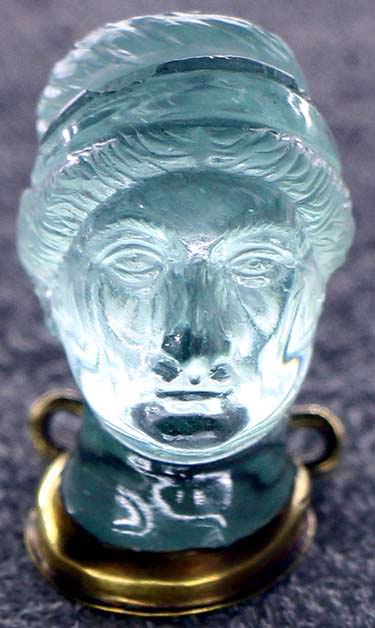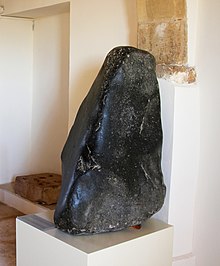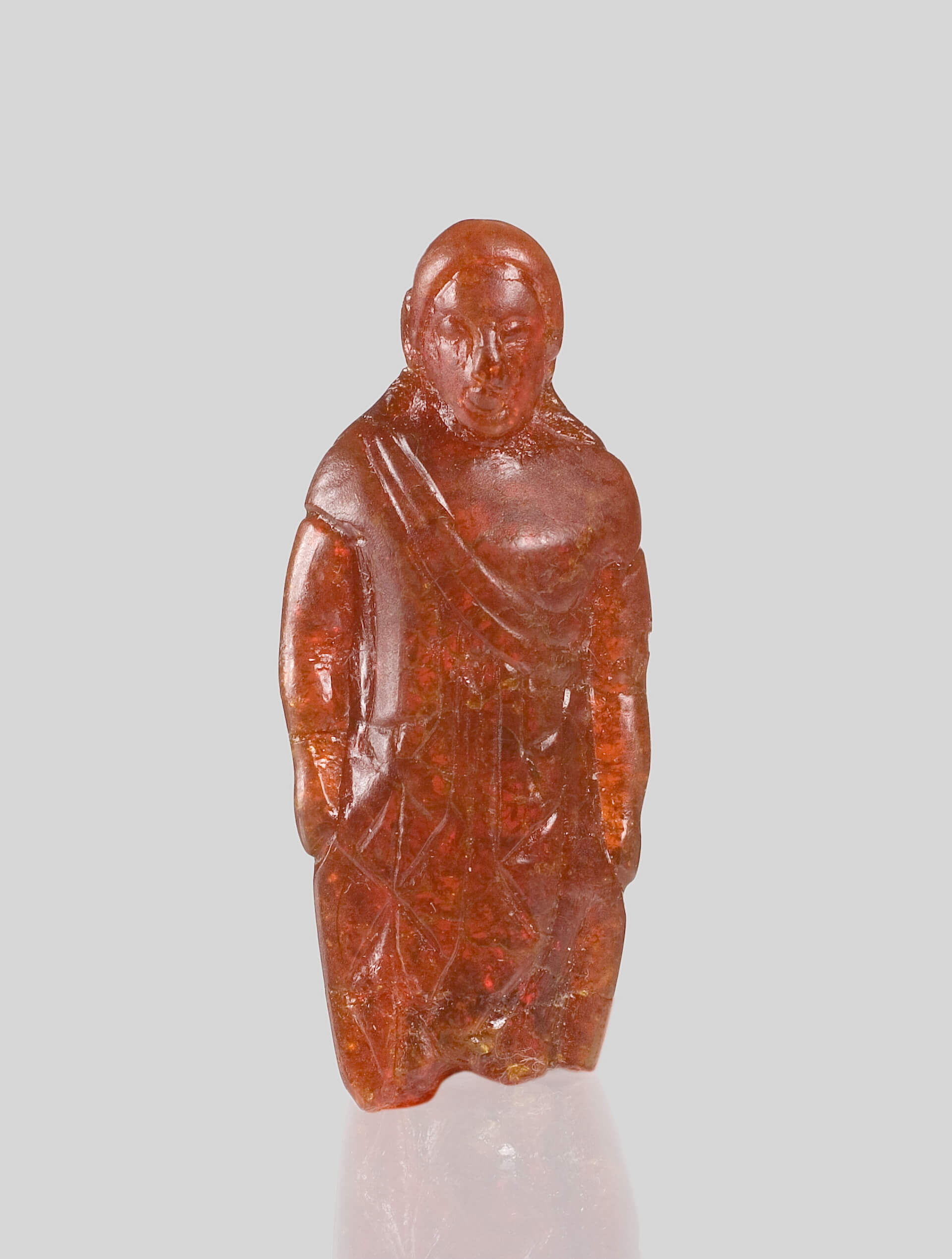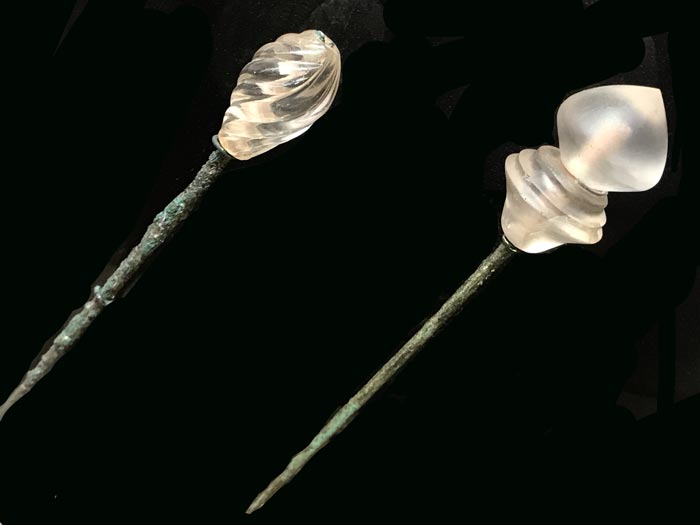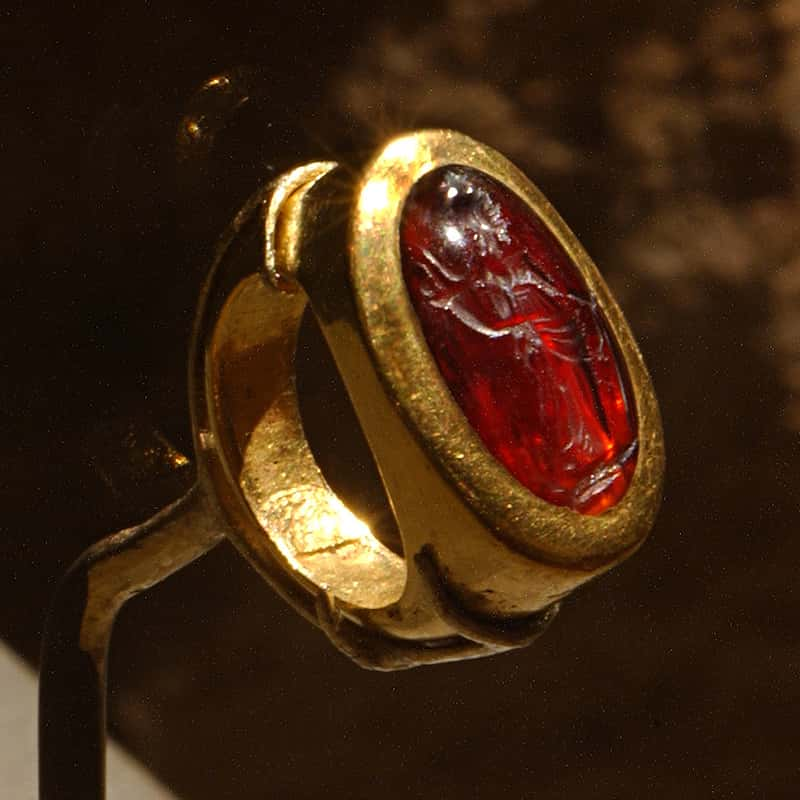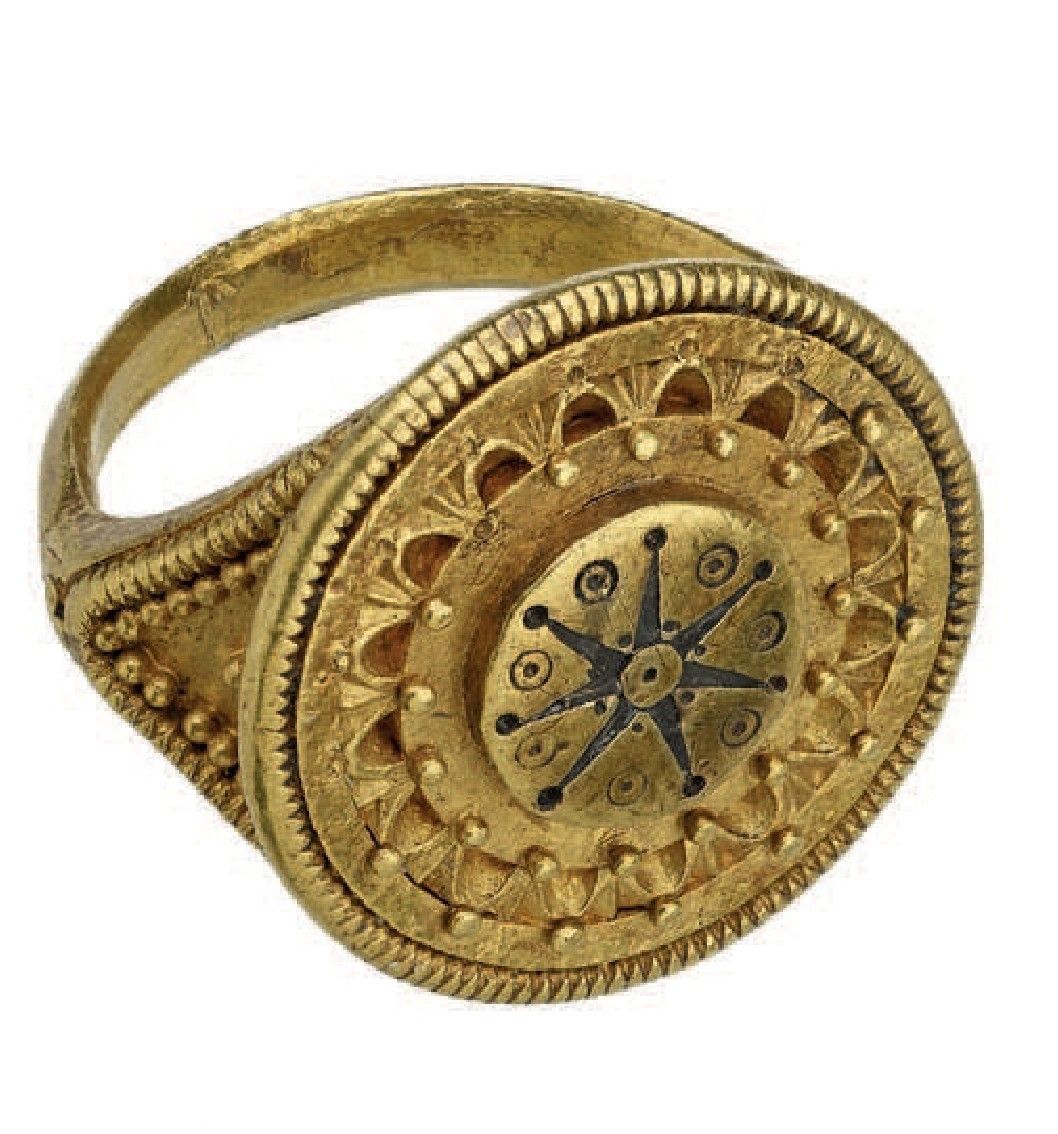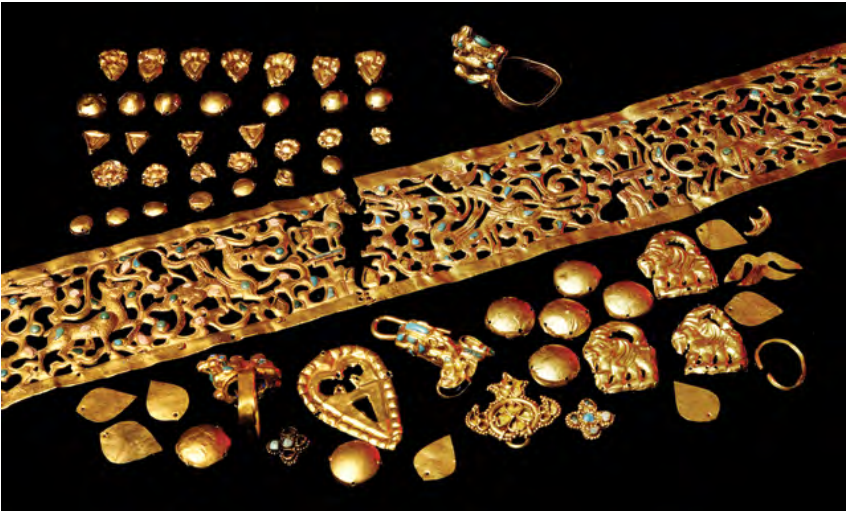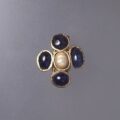The large rock crystal finger ring, perhaps this is a portrait of Marciana, the sister of the emperor Trajan.
In high relief it bears the portrait of an older woman with a curly hairstyle artfully piled up in three rows, a hairstyle that was fashionable around 100 CE.
In the Kunsthistorisches Museum Wien
The same ring, but different interpretation:
“the above ring in rock crystal which according to Borioni represents the Empress PLOTINA, wife of Trajan.” source
- Rock crystal ring decorated with a bust of woman, found in the Via delle Terme di Glanum, France. Gallo-Roman Civilisation, 1st-2nd century.
- Rock crystal ring with a portrait of a Roman lady (Glanum), 2nd century C.E. © Centre des monuments nationaux.
“This is especially evident in a significant corpus of massive crystal rings, some of which bear portraits and other images in intaglio designs and in carved relief, that have been discovered across modern France, Belgium, and Germany in mainly sepulchral contexts. A particularly fine specimen from Glanum portrays the bust of a woman whose hairstyle resembles that of the empress Faustina the Younger. While the ring itself is rather hefty (31 g) and has a considerable dimension (40 mm) along its breadth, the space for the finger is relatively small (18 mm), suggesting that it would have been worn on the pinky finger in such a way that the image would have been visible along the side of the hand, rather than on top. Worn on the finger, the ring effectively became part of and indistinguishable from the woman’s body so that the crystal portrait of the Roman lady became subsumed into a continuous, pellicular topography of flesh.”
sources:
Crystalline Aesthetics and the Classical Concept of the Medium
Patrick R. Crowley
- Amber bust of Minerva
- Amber ring placed in a cremation burial from the 1st century AD and detailed view of the carved figure. © J.-F. Peyre, DRAC Midi-Pyrénées
“Amber, dark orange red. Diameter of the ring: 43 mm; inner diameter: 20 mm. Height with bust: 50 mm. Width head: 17 mm. Chip on the edge of the bust. Smooth ring.
From Toulouse (Haute Garonne): urban excavations (Allées F. Verdier, 2002; INRAP, C. Amiel); necropolis: tomb F 85; level: mid – second half of the 1st century.
The goddess wears a Corinthian helmet thrown back on top of her head.
This type of ring with a face or a bust in high relief exists in many examples, in amber and rock crystal. The figured heads are essentially “human” female heads; deities are rare. This type of amber jewelry appears in the second half of the 1st century, but the great period of vogue begins from Nero until the reign of Hadrian. These rings are dated thanks to the type of hairstyles adorning the figured heads, and also by their origin, often female tombs (thanks to the material buried with the jewel).
Athena’s “engraved stones”. Some images of Minerva in the Roman glyptic in Gaul
by Helene Guiraud
second picture >> http://www.culture.gouv.fr/content/download/69904/533290/version/1/file/rapport_parlement_t2-midipyrenees.pdf
Mentioned also in:
E. GAGETTI, Anelli di età romana in ambra e in pietra dura, in Arte e materia. Studi su oggetti d’ornamento di età romana, a cura di G. Sena Chiesa (Quaderni di “Acme”, 49), Milano, Cisalpino. Istituto Editoriale Universitario, 2001
Third Intermediate period of Egypt (ca 1069 – 664 BCE)
In the British Museum

Height; 4.1 cm Length: 3.2 cm
In Phoenix Ancient Art S.A


A tiny carnelian frog with incised details serves as a swiveling bezel for a typical Egyptian seal ring. Carved into the base is a stylized head of a goddess, possibly Hathor.
ca. 1550-1295 BCE (New Kingdom, 18th dynasty)
In the Walters Museum














